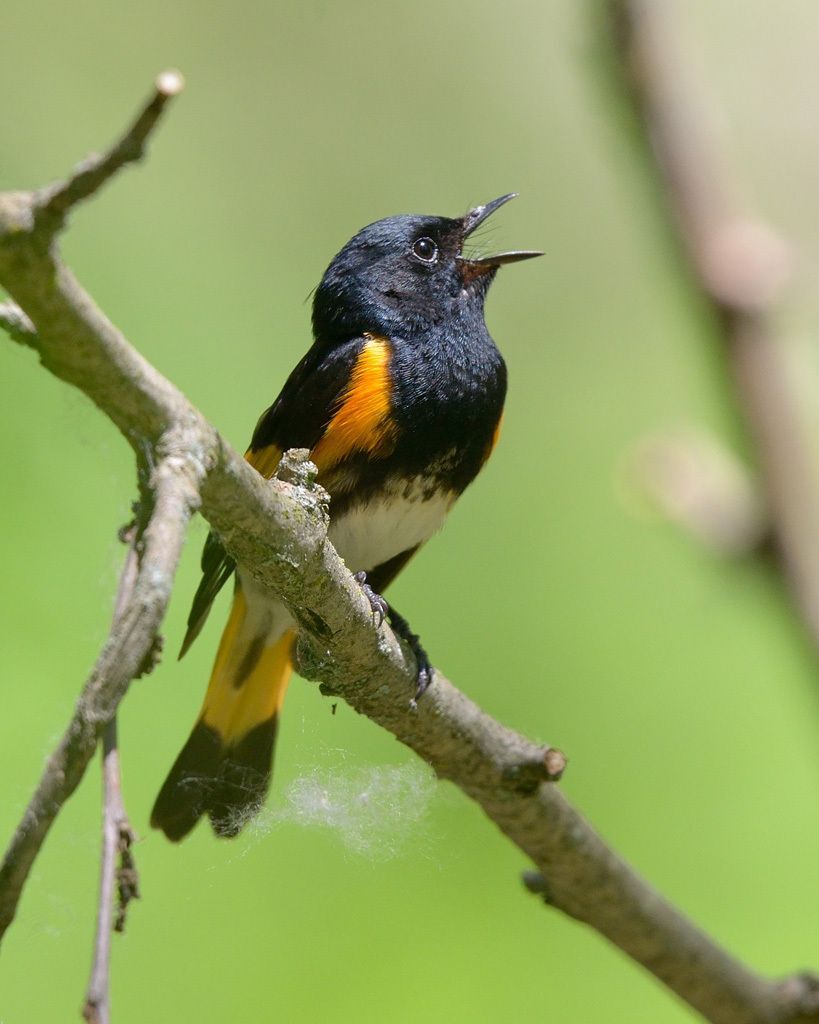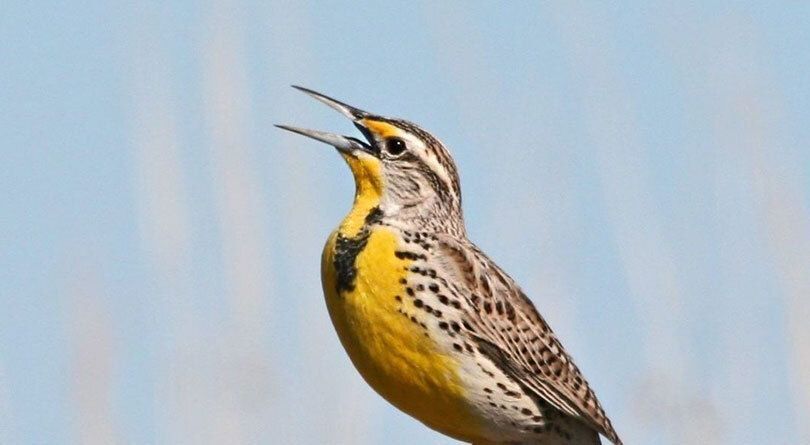
Photo: American Redstart by Larry Frame
“Migratory fallout” is a phrase that birders throw around this time of year. Don’t be alarmed — fallout refers not to radioactive particles but instead to large numbers of migratory birds dropping out of the sky to take shelter from headwinds or storms, pausing their journey north. Fallout events could last an hour or two or several days if the weather remains unfavorable. And while big fallouts are best known along the coast where bird migration can be especially spectacular, it’s always possible that a large number of warblers, vireos, and other songbirds could fall from the sky into a city park in Omaha. The trick is being at the right time and place to witness it!
Scientists have gotten much better at predicting bird migration in recent years. Harnessing the power of weather radar, ornithologists can spot concentrations of birds on the move in real time. Then they make predictions about where and when birds will migrate, using GPS tracking data from thousands of individual birds’ journeys to make their forecasts even better. Try exploring the online migration forecast maps on BirdCast.info, a project of the Cornell Lab of Ornithology. BirdCast can show you the specific days and nights when the largest numbers of birds will be on the move through our area this spring, making it easier to find them in local parks or right in your neighborhood. It can even tell you when individual species are most likely to be here in high numbers.
Knowing when peak bird migration happens also helps you know when to turn the lights out at night to reduce the risk of birds colliding with buildings. Both low-rise and high-rise buildings contribute to light pollution that confuses birds using the stars and moon to navigate. Shutting off or reducing the amount of light, especially exterior lights and interior lights on top floors, helps make sure that birds can make it through the Metro area safely. See the National Audubon Society’s Lights Out program for more details.
Birds colliding with windows is the #2 reason for human-caused bird mortality (next to outdoor cat predation at #1.) In North America, up to a billion birds die in window collisions every year. However, there are ways we can all help, such as turning off lights during migration and applying decals to windows that make them more visible to birds. Chicago’s McCormick Place Convention Center, which became infamous for causing the deaths of over 1,000 birds in one night in 2023, has reduced bird collisions by 95% after adding small white decals to its large windows facing Lake Michigan. Anyone can follow this excellent example and prevent bird collisions at homes and businesses. Birds are making incredible journeys of thousands of miles right now — and we have a role to play in helping them on their way so they can create the next generation this summer. Learn more about window decals for birds here.
Spring migration is ephemeral, mysterious, and magical. For a brief time, species rarely seen become possible again. As much as your schedule allows, it’s worth trying to see and hear what you can.
Highlights of May-June Birds
Landbirds
- Flycatchers (Alder Flycatcher, Willow Flycatcher, Olive-sided Flycatcher, Least Flycatcher, and more)
- Vireos (Blue-headed Vireo, Philadelphia Vireo, Yellow-throated Vireo, Red-eyed Vireo, Warbling Vireo, and more)
- Thrushes (Swainson’s Thrush, Gray-cheeked Thrush)
- Sparrows (Grasshopper Sparrow, Savannah Sparrow, Clay-colored Sparrow, Lincoln’s Sparrow
- Migratory warblers (many including Ovenbird, Tennessee Warbler, Nashville Warbler, Mourning Warbler, Blackpoll Warbler) and warblers that breed in Nebraska such as Yellow Warbler and Common Yellowthroat
- Summer Tanager
- Dickcissel
- Indigo Bunting
Shorebirds and Waders
- Spotted Sandpiper
- White-rumped Sandpiper
- Least Sandpiper
- Sora
- Wilson’s Phalarope
Terns
- Black Tern
- Forster’s Tern

